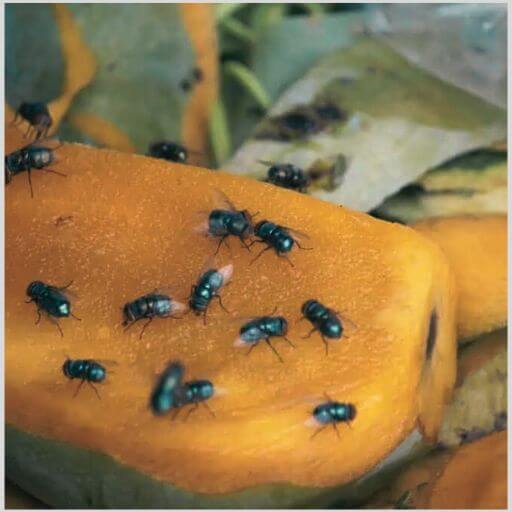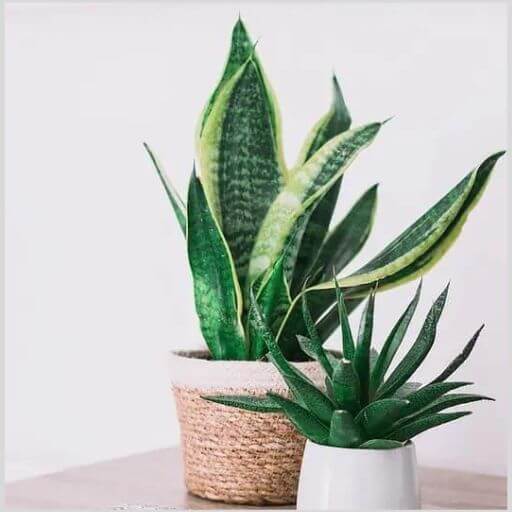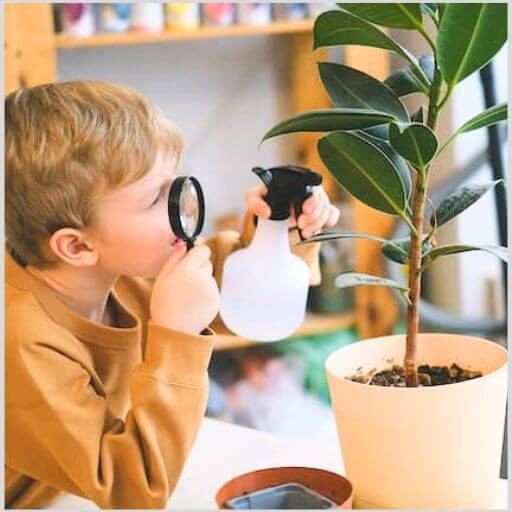Getting rid of gnats on plants: Small insects measuring 1 to 2 mm have taken up residence in your home and are ruining your life by continually flying around you. These are probably midges.
We generally encounter them in the kitchen but quickly they can settle anywhere in the house. They are particularly interested in your plants. We therefore offer you 7 effective means of action to get rid of midges in plants.
Why get rid of midges?
If midges are flying around your plants they are probably sciarids. They are also called soil midges. Indeed they appreciate its warmth and humidity which make it a perfect place to lay their eggs.

If midges are not a real danger for your plants their larvae for their part, delight in the roots of your plants as soon as the eggs hatch. The more eggs hatch the more midges the more midges the more eggs and the more eggs the more larvae.
After a while, your plants will have too few roots to satisfy the voracious appetite of these little creatures. It is therefore essential to get rid of midges quickly otherwise your favorite plants will disappear in no time.
Furthermore, it must be admitted that seeing midges flying all day long is not pleasant. Do not wait. As soon as the first insects arrive you must act. [Getting rid of gnats on plants]
Trap the Adults
Yellow attracts midges. Traps of this color, glued, can be placed in your house or apartment as well as directly in your pots. The adults will stick to it and will no longer be able to free themselves. This technique can also be used in a greenhouse.
Read also: How Much Does it Cost to Transplant a Tree?
Honey is a perfectly effective natural product if you don’t want to use a sticky strip. Place a cup of water with a spoonful of honey near the infested plants. This time, the goal is no longer to stick the insects. Attracted by the smell they will drown in the dish.
You can also attract midges away from your plants. If they like the smell of damp soil, they appreciate the smell of wine even more. A saucer of this drink placed far from your plants will have a double effect. repel insects and kill them by drowning. Apple cider vinegar and white vinegar are equally effective.
Reduce watering
The larvae need warm moist soil to develop. To avoid the establishment of midges your watering must be moderate. Let the soil dry between two waterings. If the invasion has already occurred for a quick treatment stop watering for about a week.

The goal is then to dry out the land. The larvae will succumb and the midges will no longer be attracted to its humidity. Stagnant water attracts midges be sure to empty the saucers and cups placed under your pots.
A good drainage layer promotes water evacuation. From the planting phase place clay balls gravel or remains of broken pots in the bottom of your pots and containers to facilitate water runoff through the soil. This drainage layer in addition to helping to combat midges will avoid the risk of root rot.
Corks, cut into thick slices can also be placed on the surface of the pots to absorb excess moisture from the potting soil. [Getting rid of gnats on plants]
Getting rid of gnats on plants: Use a midge repellent
Many natural products repel midges. The latter do not appreciate the smells of lemon, cinnamon, or even cloves. This way, midges will not settle near a lemon studded with cloves. A cup of liquid soap or lemon-scented dish soap will also have a repellent effect.
Read also: How Much Does Tree Pruning Cost
Lemongrass essential oil is just as effective. Place some on a cotton pad that you will place in your pots. To enhance its effectiveness, add a few cloves or two drops of clove essential oil.
Finally, when you prepare a cinnamon infusion, take some of it to keep the midges away. They hate the smell.
Use auxiliaries
Certain nematodes (flatworms) and mites are natural predators of sciarids. They can be found commercially and installed in the pots of infected plants. This means of control is particularly effective if you grow your plants in a greenhouse.
Carnivorous plants use numerous strategies to attract and capture small insects. Why not start a collection? We tell you more about these funny plants in this article.
Report or resurface
By repotting your plants, you can completely remove the soil infested with sciarid eggs and larvae. This is a radical and effective solution since you start from scratch. To save a little time, surfacing can be just as effective.
You must act as soon as the first midges arrive because the larvae will sink deeper into the soil. In this case, remove a few centimeters of soil and throw it in the trash. This will remove the eggs laid on the surface. Replace it with clean soil suitable for your crops. [Getting rid of gnats on plants]
Protect the plants
Sand is an effective shield. It prevents midges from laying their eggs in the soil. Covering the soil with clay balls or gravel will also be useful especially in larger containers. This mineral mulching technique is therefore both aesthetic and practical to prevent the establishment of midges.
Coffee grounds are a natural repellent that can be placed on the surface of the potting soil. It will directly protect the plants in the house.
Identify the input source

Observe your accommodation. Do midges appear in pipes? When a window is open? From your fruit basket? If they come through the pipes of a sink or washbasin pour olive oil into them. Wait long enough for the gnats to stick to the oil then rinse.
The midges attracted by the smell of the oil will then be drowned. Also, clean the pipes with baking soda to remove insects that could lodge there.
Well-ripe fruits also attract midges. Keep them away from your plants and don’t let your fruit ripen too quickly. Remove rotten fruit quickly.
For even more efficiency don’t hesitate to implement several of these tips. Some get rid of the larvae others scare away the adults and by combining them you will save time. [Getting rid of gnats on plants]
Best gnat killer for indoor plants
If you’re looking for the best gnat killer for indoor plants there are several options available. Here are some of the most effective ones:
- Harris Neem Oil: This is the best overall gnat killer for indoor plants. It is made from neem oil and is safe for use around children and pets. It is also effective against other pests like aphids and spider mites. It is priced at $9.99.
- Dwcom Sticky Pad Multi-Pack: This is the most budget-friendly option. It comes in a pack of 20 and is priced at $6.99.
- Protector Sticky Traps with Pineapple Stands (2 Pack): This is the best sticky trap option. It comes with pineapple stands that make it easy to place around your plants. It is priced at $9.99.
- Garden Safe Houseplant Insect Killer: This is the top treatment spray option. It is effective against a wide range of pests, including gnats, aphids, and whiteflies. It is priced at $5.98.
- Bonide Systemic Houseplant: This is the greatest granulated chemical option. It is effective against a wide range of pests, including gnats, aphids, and spider mites. It is priced at $8.99.
Alternatively, you can try some natural remedies to get rid of gnats in your indoor plants. For example, you can let the soil dry out between waterings use hydrogen peroxide as a larvicide or use vinegar as a gnat trap. [Getting rid of gnats on plants]